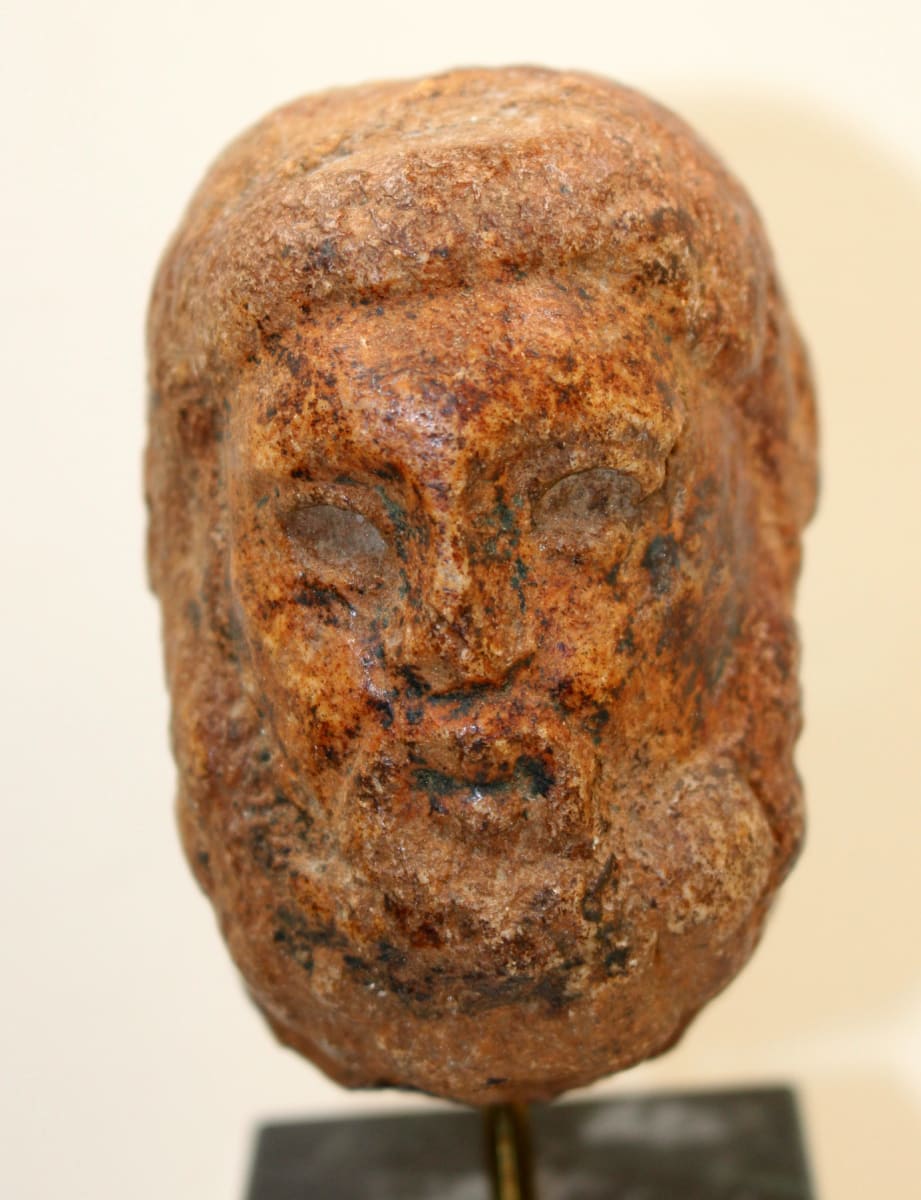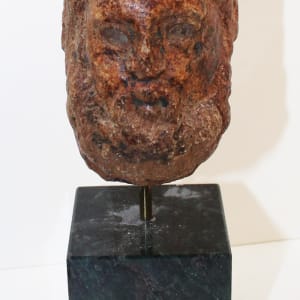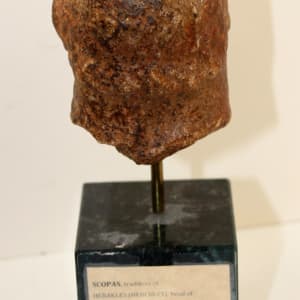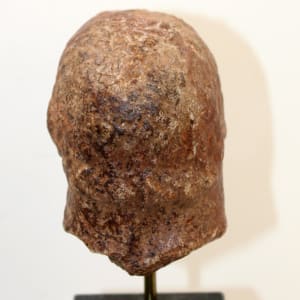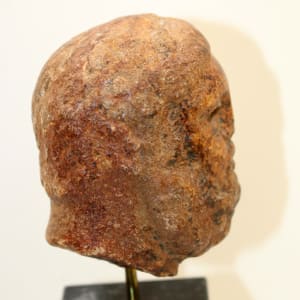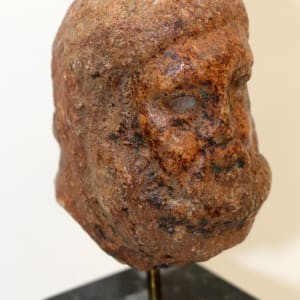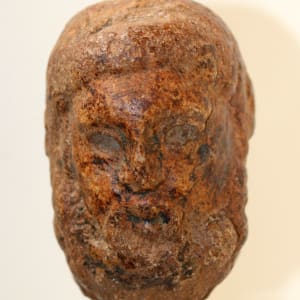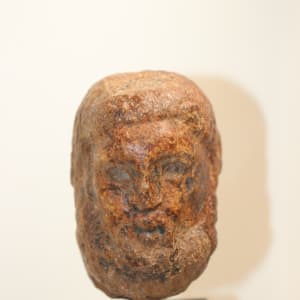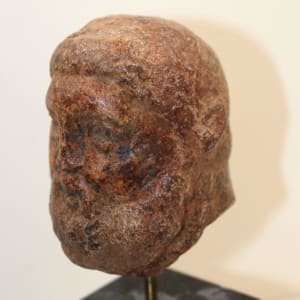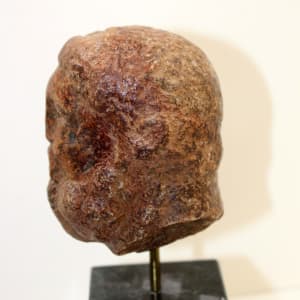Sacred World Art Collection: Recent Donations
- August 13, 2024 - December 20, 2024
- Exhibition
- /
- Artwork
- /
- Artists
Hercules, carved red marble, 3rd century BCE. With stand.
This rugged head was not carved by Scopas, but it was made within an artistic tradition that he began. Herakles (Roman: Hercules) looms large in Greek mythology. He was the only mortal man to become immortal. Scopas (c390 BCE – 350 BCE) began his work under Praxiteles. Then he moved away from that calm, gently balanced Classicism. Scopas introduced an intense emotionality to faces and figures. His characteristic style includes deeply set eyes, a slightly open mouth, and shapes that give expression to a distinctly psychological state of mind.
The Hellenistic Age, which began with the new world order generated by Alexander the Great (died 323 BCE) and the sculpture of Scopas and Lysippus in the 4th century BCE, is when the earlier tradition of generalized faces changes into individualized faces. With sculptural images of Alexander the Great, the concept of the portrait is born. Individualism becomes stronger within society as a whole. The older abstract ideal changes into personalities that hold thoughts and have feelings. Many of the greatest portraits of this period are portraits of philosophers – faces filled with thought.
A wide range of realism is practiced. For large images of deities in temples, or small images on domestic altars, the realism of form supported the realism of belief. The Greek believed their deities inhabited these sacred statues. It is no accident that most of the Greek sculpture that survives is sacred art. For the rendering of ordinary mortals, the gates were thrown open for the picturing of sadness and joy, anxiety and ecstasy, boundless energy and exhaustion – in short, for the whole spectrum of human emotion.
The heavy face and neck of this marble head speak of the legend of the strongest man on Earth, as does the very roughness of the carving. The power of this mythic person is a raw power, but a power held together by thought.
It is not surprising that this head reminds people of Michelangelo. This is the kind of ancient sculpture that actually inspired Michelangelo. From that Classical inspiration and what Michelangelo did with it came the entire history of Western sculpture from the Renaissance to Modern times.
- Subject Matter: God
- Inventory Number: 2024.082
- Collections: Sacred World Art Collection

